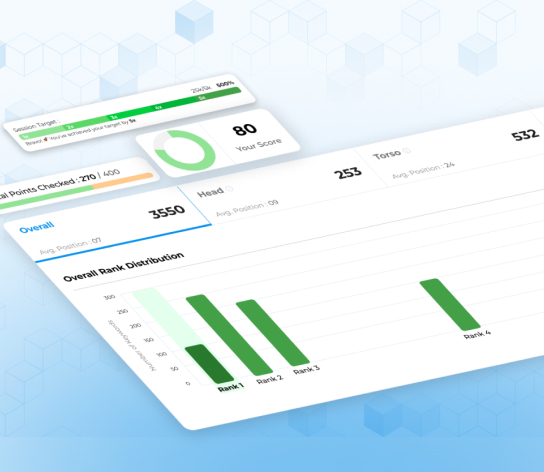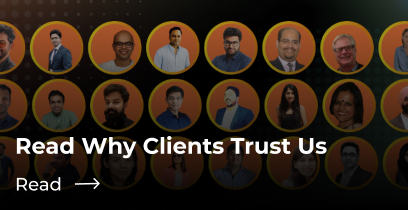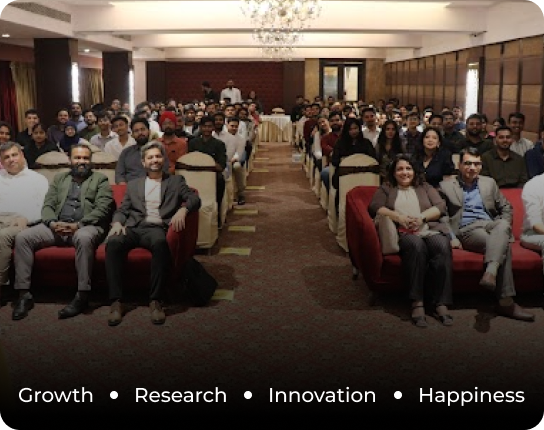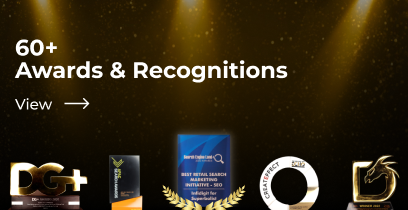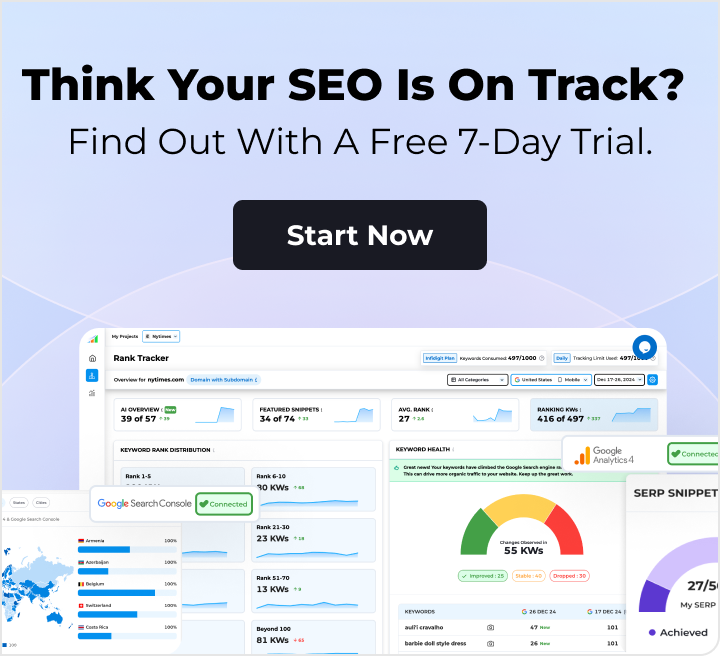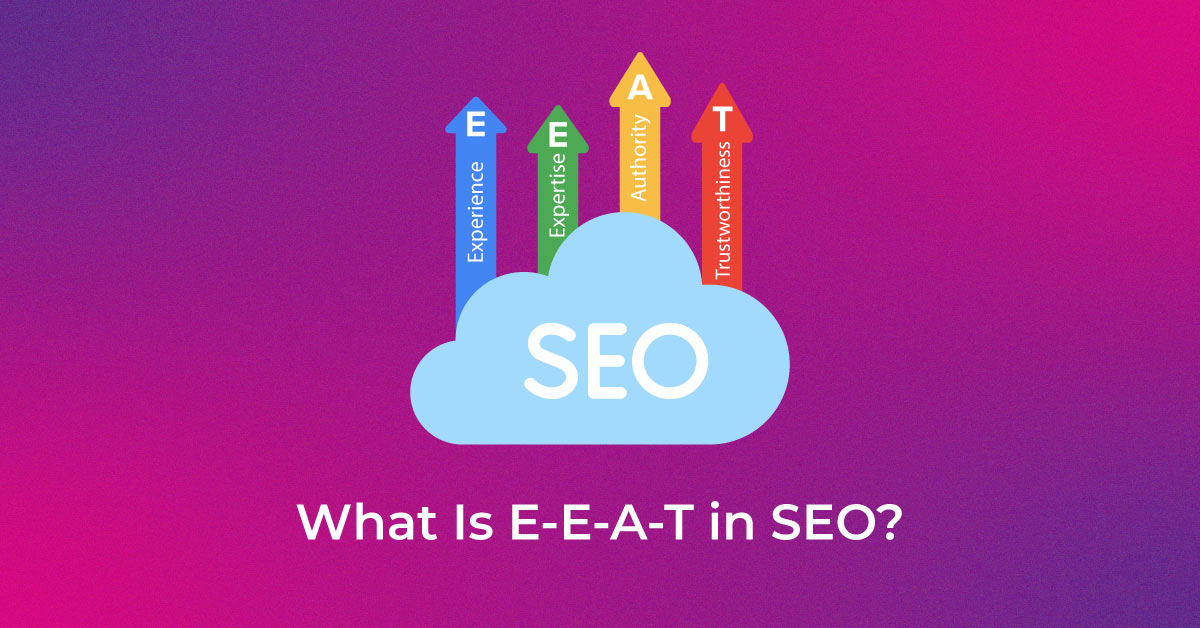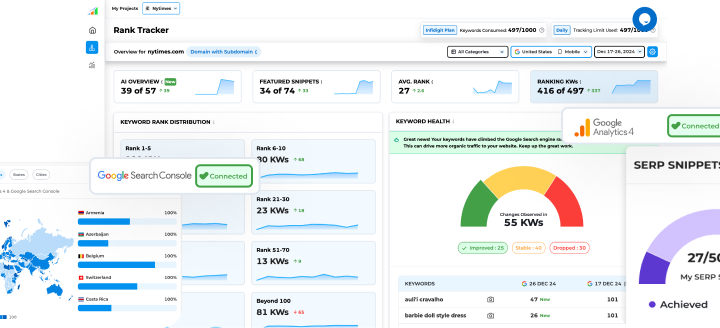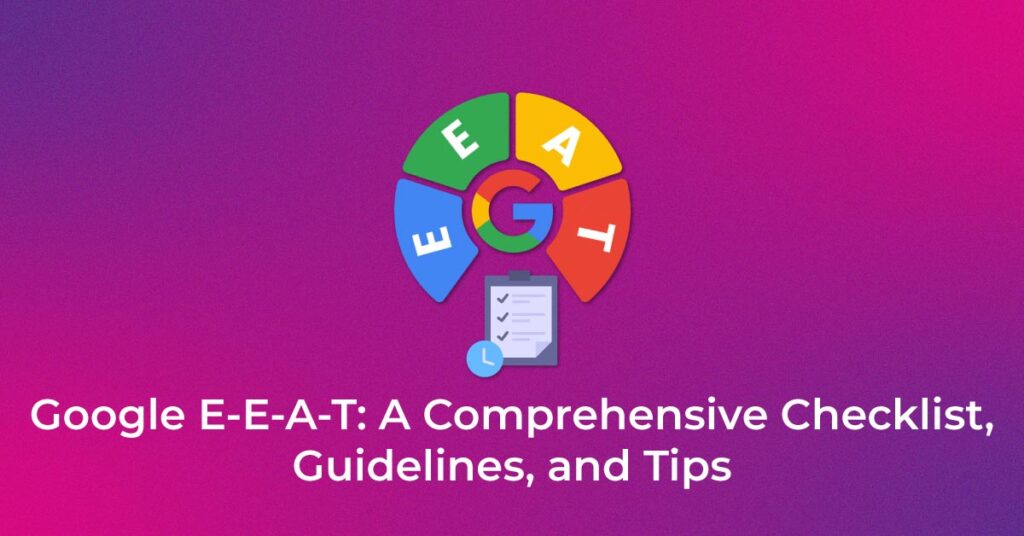To navigate the complex world of SEO successfully, using Google’s E-E-A-T — Experience, Expertise, Authority, and Trustworthiness — can be a game changer. With insights from the latest guidelines and SEO experts, this E-E-A-T checklist, complemented by actionable tips, serves as a fundamental tool to elevate your healthcare and medical SEO. Employ this trusted blueprint to refine your content strategy and cater to what Google values most in search results.
What is Google E-E-A-T?
Google E-E-A-T stands for Experience, Expertise, Authoritativeness, and Trustworthiness, the key criteria used in Google’s Search Quality Evaluator guidelines to assess content credibility. The addition of “Experience” emphasizes the importance of firsthand knowledge, especially on topics where personal involvement adds value.
While E-E-A-T is not a direct ranking factor, it helps guide content that aligns with Google’s standards for quality, particularly in Your Money or Your Life (YMYL) topics like health, finance, or safety. Prioritizing E-E-A-T can improve your site’s perceived trust and long-term SEO success.
Breaking Down the Acronym: Experience, Expertise, Authority, Trust
Here’s what each component of E-E-A-T means:
- Experience: This refers to the firsthand involvement of the content creator with the subject. For example, a person writing about a travel destination they’ve actually visited demonstrates real-world experience, which boosts credibility.
- Expertise: Focuses on the depth of knowledge the author has, particularly important for sensitive topics like medical or legal advice. Credentials, education, and demonstrated subject matter understanding help establish expertise.
- Authoritativeness: Evaluates the reputation of the content creator or website within their field. Backlinks, references from reputable sources, and recognition by others in the industry all contribute to authoritativeness.
- Trust (Trustworthiness): The most important component, trust includes factors like accuracy, transparency, secure website practices, and clear ownership or authorship. Google emphasizes trust as the “most important member” of the E-E-A-T family.
E-E-A-T is not a direct ranking factor but serves as a key framework influencing how Google systems identify high-quality, helpful content.
Why is E-E-A-T Important for SEO?
-E-A-T is important because it reflects the qualities Google looks for in high-quality content, especially for Your Money or Your Life (YMYL) topics like health, finance, or safety, where misinformation can have real-world consequences. While E-E-A-T is not a direct ranking factor, it influences how content is evaluated during core updates and quality assessments.
Google’s systems aim to reward content that is accurate, reliable, and created by those with genuine experience and subject matter knowledge. Websites that consistently meet E-E-A-T standards are more likely to earn trust, visibility, and long-term SEO performance, especially in competitive or high-stakes niches.
How E-E-A-T Impacts Rankings
Although E-E-A-T isn’t a direct ranking signal, it influences how Google interprets overall content quality, especially during core algorithm updates. Sites that demonstrate strong E-E-A-T are more likely to be favored by Google’s ranking systems, particularly when users are searching for accurate, safe, and dependable information. Inconsistencies in E-E-A-T, such as vague authorship or low-quality sourcing, can result in ranking volatility or demotion, even if technical SEO is strong. This makes E-E-A-T an essential part of long-term content strategy.
Google’s Perspective on Content Trustworthiness
Google considers trustworthiness the most critical element of E-E-A-T. According to its Quality Rater Guidelines, even expert or authoritative content must be trustworthy to be considered high quality. Factors such as transparent authorship, factual accuracy, secure browsing (HTTPS), and alignment with user intent all contribute to trust.
Google emphasizes that content without trust, even if it demonstrates expertise, may be rated low by quality evaluators, particularly in YMYL categories.
Google E-E-A-T Checklist: 14 Key Ways to Improve Your Site’s Credibility
Improving your site’s E-E-A-T isn’t about guessing; it’s about aligning with what Google looks for in high-quality content. This checklist covers 14 essential steps you can take to enhance your credibility, reliability, and SEO performance across all types of content.
1. Prioritise Quality in Every Piece of Content
High-quality content is the foundation of strong E-E-A-T. Google rewards pages that are accurate, insightful, and genuinely helpful to users. Whether it’s a landing page or part of your blog content writing strategy, each piece should be well-researched, clearly written, and focused on meeting user intent.
Rather than chasing quantity, aim for depth, originality, and relevance. Thoughtful blog content not only keeps readers engaged but also signals to Google that your site is a credible and authoritative source, boosting both trust and search visibility.
2. Include Time References to Add Relevance
Using time-based references like “Updated in 2025” or “10+ years of experience” helps establish both topical relevance and credibility. These signals show users—and search engines—that your content is current, maintained, and backed by real experience.
Google’s guidelines highlight that freshness and accuracy are vital for evolving topics. Including time references tells search engines your content remains relevant, which can support better visibility and trust.
3. Create Detailed Author Bio Pages
Creating dedicated author bio pages is a proven tactic for enhancing E-E-A-T. Such pages should detail who is behind the content, showcasing their qualifications, experience, and why they’re a credible source of information. By illustrating the human expertise responsible for your content, you provide transparency and enhance trust with your readers. In the eyes of manual assessors and algorithms alike, this can significantly bolster the authority of your entire website.
4. Use First-Person Narrative
Embracing a first-person narrative in your content can offer a tangible demonstration of the ‘Experience’ component of E-E-A-T. Relating personal experiences can make your articles more engaging and relatable, affirming your direct involvement and familiarity with the subject matter. However, it’s vital to balance anecdotal insights with professionalism, ensuring that the storytelling serves the purpose of enriching the content rather than overshadowing the factual information that users seek.
5. Build Topical Authority Across Your Niche
Building topical authority means establishing your site as the definitive source for information on a particular subject. Achieve this by producing a consistent stream of thorough, interconnected content that covers your topic comprehensively. This not only positions you as an expert in your field but also signals to search engines that your site contains a wealth of relevant and reliable information, potentially improving your rankings for related queries.
6. Leverage Social Media
Social media can enhance your website’s E-E-A-T (Experience, Expertise, Authoritativeness, Trustworthiness). Share industry-specific tips on LinkedIn to establish expertise. Post customer testimonials or live product demos on Instagram to build trust and showcase experience. Use Twitter to engage in real-time discussions with niche audiences, reinforcing authority. For instance, a nutritionist might share diet plans and client success stories across platforms. Always maintain consistency, provide accurate information, and encourage interactions to build credibility and trust.
7. Create High-Quality Backlinks
Link building is essential for strengthening E-E-A-T. Focus on acquiring high-quality backlinks from authoritative websites in your niche to boost your site’s credibility. For example, collaborate with respected blogs or publications to feature your content. Guest posts or interviews on trusted platforms can also enhance your authority. Additionally, internal linking helps showcase expertise by guiding users to relevant content. Always ensure that your links align with your niche and are from reputable sources to build trust and improve your site’s search visibility.
8. Add Structured Data for Clarity
Structured data helps search engines understand your content, improving E-E-A-T signals. Use schema markup to highlight key information like author details, publication date, and reviews. For example, adding FAQ schema to your pages can showcase expertise and answer user queries directly in search results. Implementing organization or person schema builds trust by verifying your credentials. Structured data not only enhances visibility in rich snippets but also reinforces your site’s authority and trustworthiness by providing clear, accurate information to search engines and users.
9. Regularly Check for Broken Links
Broken links can harm your E-E-A-T by creating a poor user experience and signaling a lack of upkeep. Regularly audit your website to identify and fix broken links using tools like Screaming Frog or Google Search Console. For instance, replace outdated links with updated, authoritative sources to maintain trust and credibility. Internal broken links can disrupt navigation, while external ones may damage your site’s authority. Keeping your links functional ensures a seamless user experience and reinforces your site’s reliability.
10. Implement SSL Certificate
An SSL certificate is vital for establishing trust and improving E-E-A-T. It secures your website by encrypting data, protecting users from potential breaches. Websites with HTTPS are favored by search engines, enhancing credibility and rankings. For instance, an e-commerce site with an SSL certificate assures customers that their payment information is safe. Enabling SSL not only boosts trustworthiness but also signals professionalism, making users more likely to engage with your content. Ensure your site is HTTPS-enabled to provide a secure and reliable experience.
11. Understand GDPR Compliance
GDPR compliance is essential for establishing trust and credibility. It involves managing user data responsibly by implementing clear privacy policies, obtaining consent before data collection, and providing opt-out options. Adhering to GDPR guidelines demonstrates your commitment to user privacy and security, reinforcing your website’s trustworthiness. Regular audits of data handling practices ensure compliance and help maintain user confidence, ultimately supporting your E-E-A-T efforts.
12. Optimize for Mobile Devices
Optimizing for mobile is crucial to enhance E-E-A-T. A mobile-friendly website provides a seamless user experience, building trust and credibility. Ensure your site uses responsive design, fast-loading pages, and easy navigation for mobile users. Test functionality across devices to avoid issues like misaligned content or slow performance. Search engines prioritize mobile-first indexing, so a well-optimized site boosts visibility and authority. Providing a smooth mobile experience shows professionalism, keeping users engaged and reinforcing your site’s expertise and trustworthiness.
13. Improve UX Design for Better Engagement
Monitoring user experience is key to maintaining and improving E-E-A-T. Analyze factors like page speed, navigation, and content readability to ensure users have a positive interaction with your site. Use Google SEO tools, such as Google Analytics and Search Console, to track user behavior, identify areas for improvement, and ensure your site aligns with search engine best practices. A seamless user experience builds trust and keeps visitors engaged, reinforcing your site’s credibility and expertise. Regularly test and update your site to address potential issues, ensuring it remains user-friendly and aligned with audience expectations.
14. Boost Site Speed and Performance
Site speed is a critical factor in enhancing E-E-A-T. A fast-loading website provides a better user experience, builds trust, and keeps visitors engaged. Optimize images, use caching, and minimize scripts to reduce loading times. Tools like Google PageSpeed Insights can help identify performance issues and suggest improvements. Slow websites frustrate users and may lower your credibility and rankings. Prioritizing site speed ensures your content is accessible quickly, reinforcing your site’s expertise and trustworthiness while improving overall search engine visibility.
Best Practices When Applying the E-E-A-T Checklist
Effectively applying E-E-A-T goes beyond theory; it requires tailoring credibility signals across your content strategy. The following best practices help operationalize E-E-A-T across formats, platforms, and SEO workflows.
1. Map E-E-A-T Signals to Different Content Types
Not all content needs the same E-E-A-T emphasis. For example, a YMYL blog post should highlight author expertise and sourcing, while a product page may rely more on authentic reviews, secure browsing, and detailed specifications. Map specific E-E-A-T signals like experience or trust to content type and user intent to ensure the right signals are in place.
2. Document Expertise Using Case Studies and Testimonials
Showcasing real-world success stories helps reinforce both experience and authority. Case studies demonstrate applied knowledge, while client testimonials add third-party validation. Google values signals that can be independently verified, and these forms of social proof contribute to both trust and credibility.
3. Track E-E-A-T Performance via SEO Tools
While E-E-A-T isn’t a direct metric, you can track related indicators like engagement, bounce rate, and backlink quality using tools like Google Search Console, Ahrefs, or SEMrush. Monitor branded searches, content performance, and visibility changes during core updates to understand how well your E-E-A-T improvements are translating into SEO impact.
Conclusion
Incorporating E-E-A-T principles into your SEO strategy helps build a credible, user-focused website. By emphasizing high-quality content, technical reliability, and secure browsing practices, you align with what both users and search engines expect. Regular audits and content updates ensure your site stays relevant and trustworthy, improving visibility while delivering a valuable experience for your audience.
FAQs About the E-E-A-T Checklist
What is included in an E-E-A-T audit?
An E-E-A-T audit includes reviewing content accuracy, author credentials, website reputation, trust signals (e.g. HTTPS, contact info, clear policies), and overall transparency to ensure alignment with Google’s quality guidelines.
Is E-E-A-T a direct ranking factor?
No, E-E-A-T is not a direct ranking factor, but it influences how Google evaluates content quality and determines which pages to rank higher, especially for YMYL topics.
How does E-E-A-T relate to AI-generated content?
AI-generated content must still meet E-E-A-T standards. Google accepts it if it’s accurate, original, trustworthy, and clearly identifies authorship or source.
How often should I update my E-E-A-T signals?
Update E-E-A-T signals regularly, ideally every 3 to 6 months or after major Google updates, industry changes, or when publishing new content.
Popular Searches
How useful was this post?
1 / 5. 1


